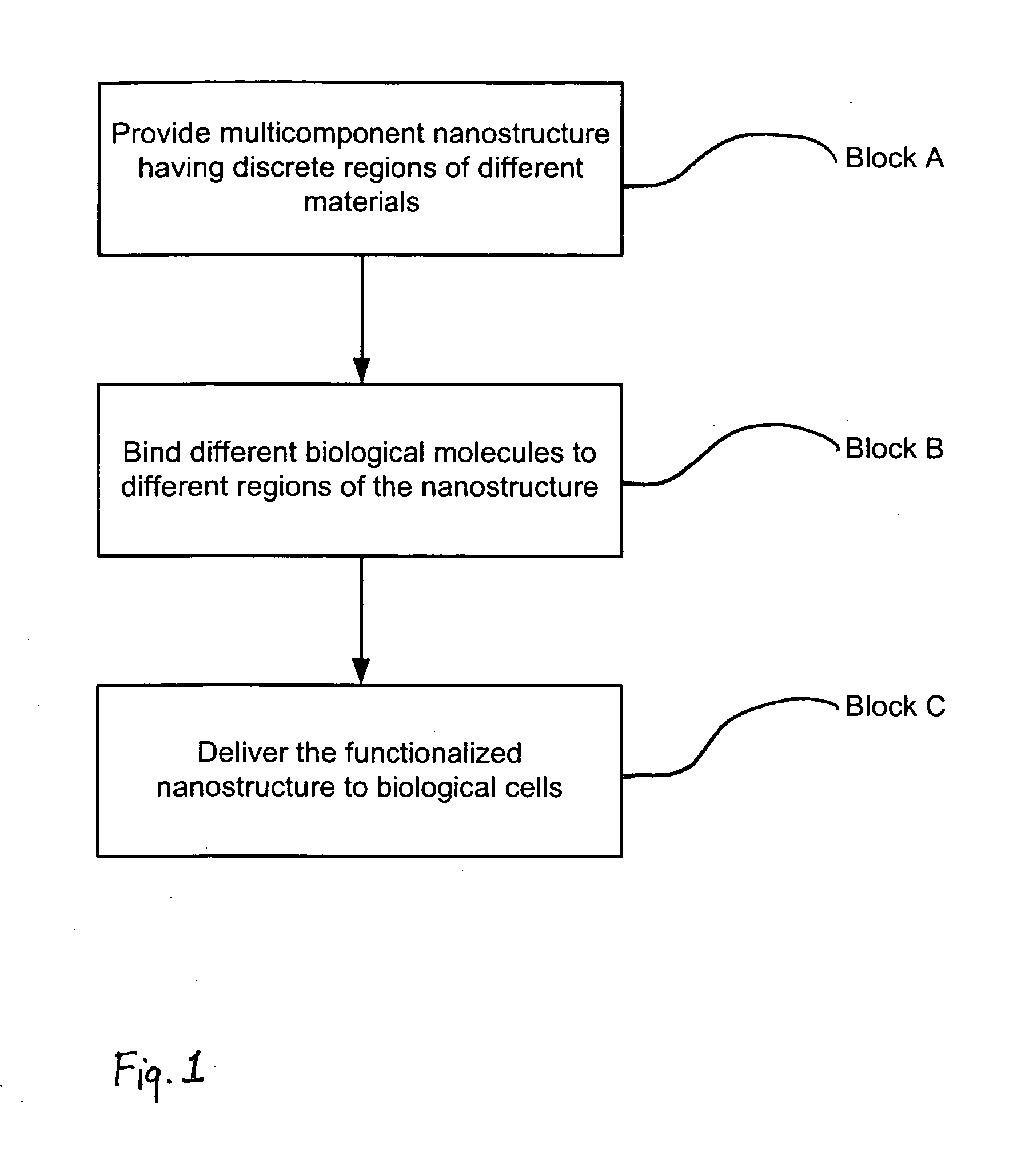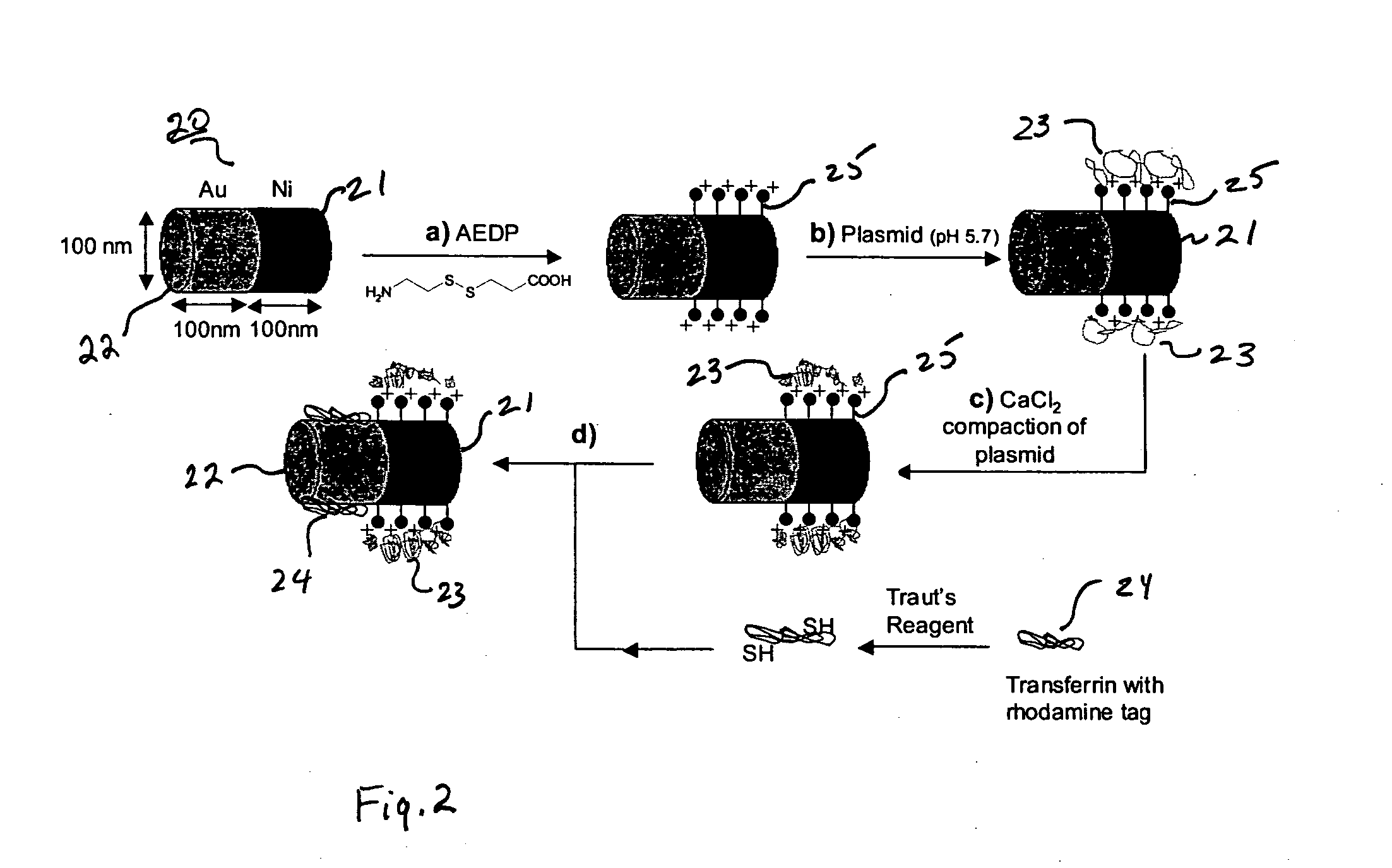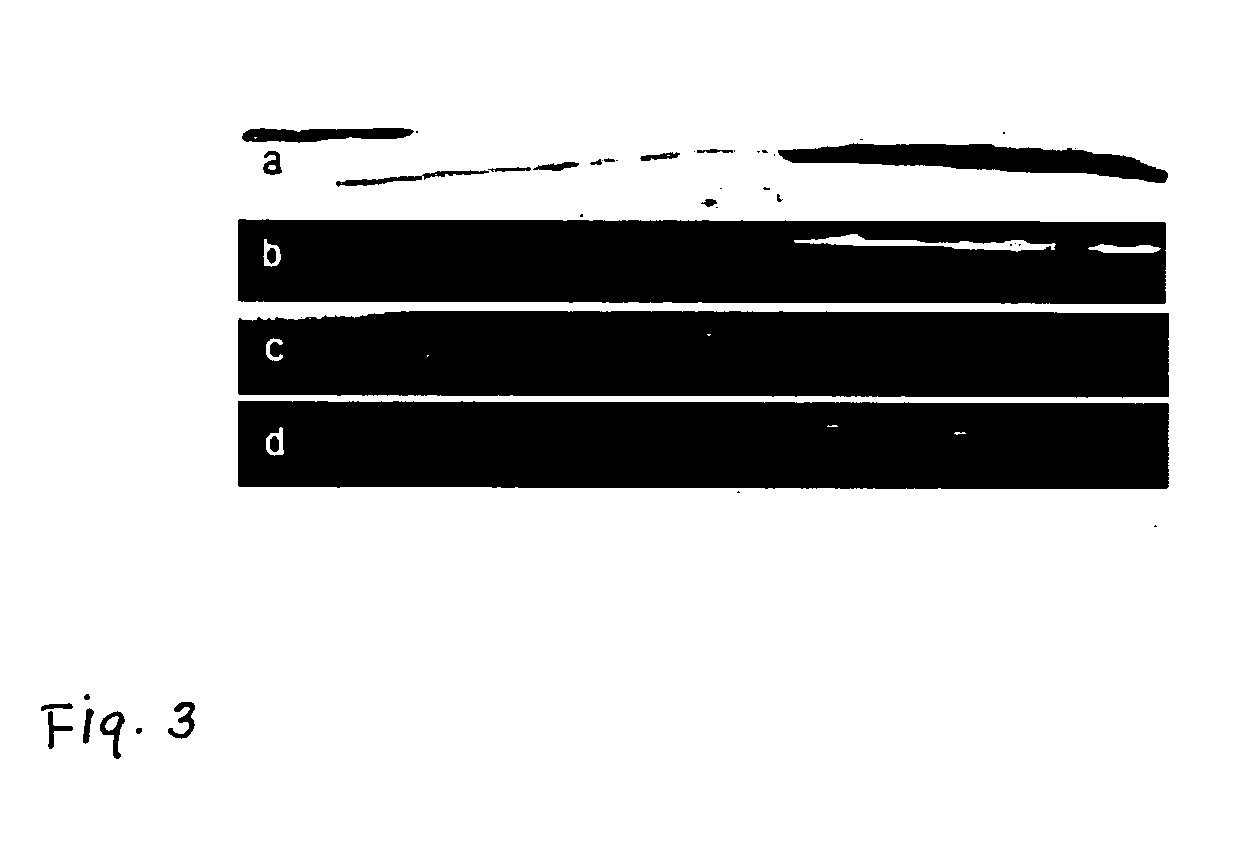Methods and products for delivering biological molecules to cells using multicomponent nanostructures
a nanostructure and biological molecules technology, applied in the field of biological molecules delivery to cells, can solve the problems of ineffective vaccines, ineffective insertion of new genetic material, and high risk of killing host cells, and achieve the effect of improving the effectiveness of cell delivery or effectiveness
- Summary
- Abstract
- Description
- Claims
- Application Information
AI Technical Summary
Benefits of technology
Problems solved by technology
Method used
Image
Examples
example 1
Delivery of Genetic Material for Gene Therapy
[0030] The goal of gene therapy is to introduce foreign genes into somatic cells to supplement the defective genes or to provide additional biological functions. Gene transfer (“transfection”) can be achieved using either viral or synthetic non-viral delivery systems (“vectors”). While viral vectors exhibit high efficiency, synthetic transfection systems provide several advantages including ease of production and reduced risk of cytotoxicity and immune response. Much of the poor transfection efficiency of non-viral vector stems from the difficulty of controlling their properties at the nanoscale. One aspect of the present invention is a novel non-viral delivery system based on nanostructures that can simultaneously bind compacted DNA plasmids and target cell receptors for enhanced internalization. The present example demonstrates the potential of this system to deliver genetic material with precise composition and size control.
[0031] Ac...
example 2
Vaccinations
[0048] The goal in genetic vaccinations is to encode cells to transiently manufacture antigens that are subsequently taken up by macrophages or dendritic cells (key antigen presenting cells or APCs). APCs process these antigens via class I or class II pathways where they bind to major histocompatibility complexes that present the antigen on the surface of the APCs. These APCs then move to the lymphoid organs where T lymphocytes that scavenge the surfaces of the APCs become stimulated to respond against the antigen presented. When, for example, the encoded antigen is tumor specific a strong CD8+ and CD4+ T-cell and antibody response can be generated for protection and prevention against that tumor. The inorganic nanorod vectors described herein can generate strong but transient transgene expression when bombarded into skin, which has natural abundance of antigen presenting cells. These nanorods therefore have potential for vaccination applications. In contrast to other i...
example 3
Delivery of Multiple Active Molecules
[0055] This example demonstrates the selective derivatization of three segment Au / Ni / Pt nanowires using metal specific ligands. By taking advantage of the individual metal segments' affinity to unique functional groups, we show that Au / Ni / Pt nanowires can be functionalised with a thiol linkage on the gold segments, an isonitrile linkage on the platinum segment and a carboxylate linkage on the nickel segment. Selective functionalisation of the Au, Ni and Pt segments is achieved by first functionalizing the Ni segment with carboxylic acid terminated ligands and the Au and Pt segments with an isonitrile terminated ligand. Carboxylic acids have been found to bind to nickel surfaces at an adduct formation constant of 6±5×106 M−1. Isonitrile groups are reported to form monolayers on both Au and Pt surfaces. The isonitrile groups on the Au surface can then be selectively substituted with thiol terminated ligands.
[0056] The formation of three component...
PUM
| Property | Measurement | Unit |
|---|---|---|
| Structure | aaaaa | aaaaa |
| Immunogenicity | aaaaa | aaaaa |
Abstract
Description
Claims
Application Information
 Login to View More
Login to View More - R&D
- Intellectual Property
- Life Sciences
- Materials
- Tech Scout
- Unparalleled Data Quality
- Higher Quality Content
- 60% Fewer Hallucinations
Browse by: Latest US Patents, China's latest patents, Technical Efficacy Thesaurus, Application Domain, Technology Topic, Popular Technical Reports.
© 2025 PatSnap. All rights reserved.Legal|Privacy policy|Modern Slavery Act Transparency Statement|Sitemap|About US| Contact US: help@patsnap.com



